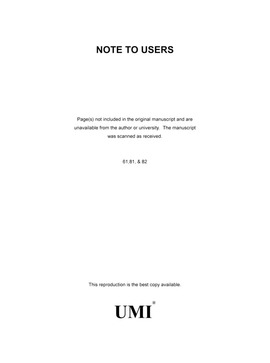| dc.contributor.advisor | Schultz, David, | en_US |
| dc.contributor.advisor | Carr, Frederick, | en_US |
| dc.contributor.author | Heinselman, Pamela Lynn. | en_US |
| dc.date.accessioned | 2013-08-16T12:19:18Z | |
| dc.date.available | 2013-08-16T12:19:18Z | |
| dc.date.issued | 2004 | en_US |
| dc.identifier.uri | https://hdl.handle.net/11244/686 | |
| dc.description.abstract | Another aspect of intraseasonal variability is the daily persistence of regimes. DR is the most persistent regime, followed by CEMR, NDR, EMR, and CEMSR. Occasionally, sharp changes in storm coverage precede or follow a given regime. At mid-upper-levels significant local changes in moisture arise mostly from quasi-horizontal advection, in response to changes in the synoptic-scale flow. In most cases, moistening corresponds with the westward or northward expansion of the subtropical high, whereas drying corresponds with the passage of a shortwave trough. Occasionally, mid-upper-level moistening is enhanced by the vertical advection of moisture ahead of shortwave troughs. At low-levels in Phoenix, significant changes in moisture at 12 UTC are associated with three situations: precipitation in the vicinity of Phoenix the previous night (30%), surges from the Gulf of California (35%), and moisture advection east or southeast of Phoenix (35%). | en_US |
| dc.description.abstract | A discriminant analysis of several 12 UTC sounding variables at Phoenix reveals that precipitable water provides strong discrimination of DR and EMR from each other, and, the more convectively active regimes (e.g., CEMR, CEMSR, and NDR). On the other hand, 0--6-km shear offers the best discrimination of NDR from CEMR and CEMSR. Although this discriminant analysis becomes less skillful when considering the potential for one or more of the wet regimes (especially CEMR vs. CEMSR), as a whole, the combined discriminant analysis (Fig. 23) has more skill than a random forecast (HSS = 0.43), and is more accurate than persistence or a one in five guess. | en_US |
| dc.description.abstract | In Arizona, the North American Monsoon (NAM) supplies up to 50% of the region's annual rainfall. Although Arizona's diurnal precipitation climatology indicates that precipitation follows a regular cycle, daily storm development patterns deviate from this periodicity. The purpose of this study is to investigate the intraseasonal variability of diurnal storm development and environment over Arizona. Intraseasonal variability of diurnal storm development is investigated during the 1997 and 1999 NAMs using radar reflectivity moasics constructed from Phoenix and Flagstaff Weather Surveillance Radar-1988 Doppler (WSR-88D) data. This investigation reveals five repeated storm development patterns or regimes, including the (1) dry regime (DR), (2) eastern mountain regime (EMR), (3) central-eastern-mountain regime (CEMR), (4) central-eastern-mountain and Sonoran regime (CEMSR), and (5) nondiumal regime (NDR), listed in the order of increasing areal storm coverage across the domain. Although regions within these regimes overlap, they highlight different regions where storm development is most active, which, in turn, may prove useful for zone forecasts within the NWS. The environment associated with each regime is found by analyzing 12 UTC soundings at Phoenix and 500-mb maps over the southwest United States. This analysis shows that the spatial distribution of tropospheric moisture controls the areal extent of storm development over elevated terrain. In turn, the spatial distribution of tropospheric moisture is controlled by the synoptic-scale flow. | en_US |
| dc.format.extent | xv, 138 leaves : | en_US |
| dc.subject | Monsoons Arizona. | en_US |
| dc.subject | Physics, Atmospheric Science. | en_US |
| dc.subject | Storms Arizona. | en_US |
| dc.subject | Rain and rainfall Diurnal variations. | en_US |
| dc.title | Intraseasonal variability of the North American monsoon over Arizona. | en_US |
| dc.type | Thesis | en_US |
| dc.thesis.degree | Ph.D. | en_US |
| dc.thesis.degreeDiscipline | School of Meteorology | en_US |
| dc.note | Source: Dissertation Abstracts International, Volume: 64-12, Section: B, page: 6123. | en_US |
| dc.note | Co-Chairs: Frederick Carr; David Schultz. | en_US |
| ou.identifier | (UMI)AAI3117196 | en_US |
| ou.group | College of Atmospheric & Geographic Sciences::School of Meteorology | |
